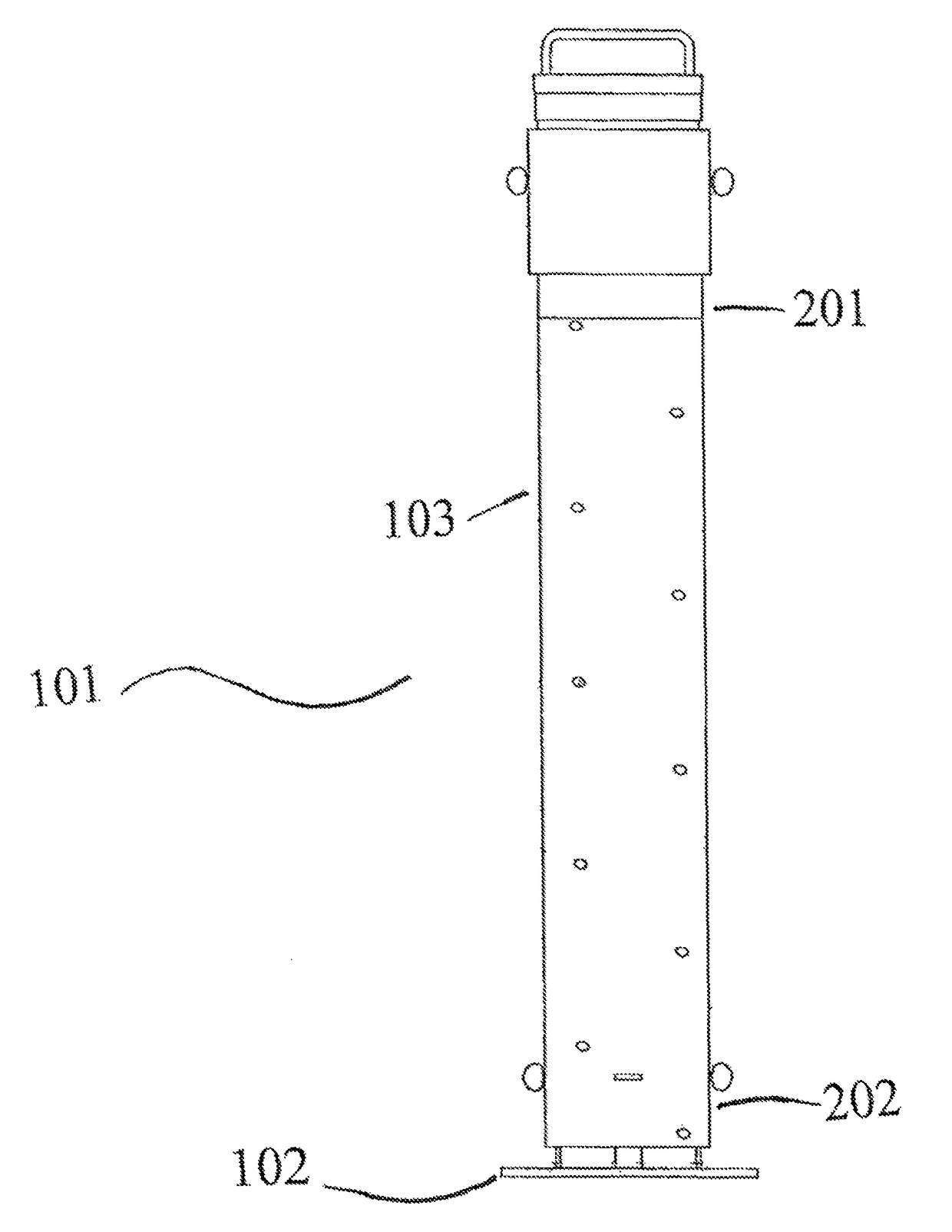Alert system for detecting rising water levels
a detection system and detection technology, applied in the direction of instruments, human health protection, climate sustainability, etc., can solve the problems of flash floods that are extremely dangerous, the damage of moving water from floods is immense, and the place where rain falls is vulnerable, so as to save their personal belongings, equipment, and lives.
- Summary
- Abstract
- Description
- Claims
- Application Information
AI Technical Summary
Benefits of technology
Problems solved by technology
Method used
Image
Examples
Embodiment Construction
)
[0042]FIG. 1 provides a prospective view of a diagram of an embodiment of the portable rising water alert device described herein. FIG. 4 provides a cut-through of an embodiment of the portable water alert device described herein. As depicted therein, the portable rising water alert device (101) generally consists of the following components: a standing base plate (102); a main body (103); a float (104); a stabilizing rod (105); a water level rod (106); and an alarm assembly (108).
[0043]Throughout this disclosure, the term “computer” describes hardware which generally implements functionality provided by digital computing technology, particularly computing functionality associated with microprocessors. The term “computer” is not intended to be limited to any specific type of computing device, but it is intended to be inclusive of all computational devices including, but not limited to: processing devices, microprocessors, personal computers, desktop computers, laptop computers, wor...
PUM
 Login to View More
Login to View More Abstract
Description
Claims
Application Information
 Login to View More
Login to View More - R&D
- Intellectual Property
- Life Sciences
- Materials
- Tech Scout
- Unparalleled Data Quality
- Higher Quality Content
- 60% Fewer Hallucinations
Browse by: Latest US Patents, China's latest patents, Technical Efficacy Thesaurus, Application Domain, Technology Topic, Popular Technical Reports.
© 2025 PatSnap. All rights reserved.Legal|Privacy policy|Modern Slavery Act Transparency Statement|Sitemap|About US| Contact US: help@patsnap.com



